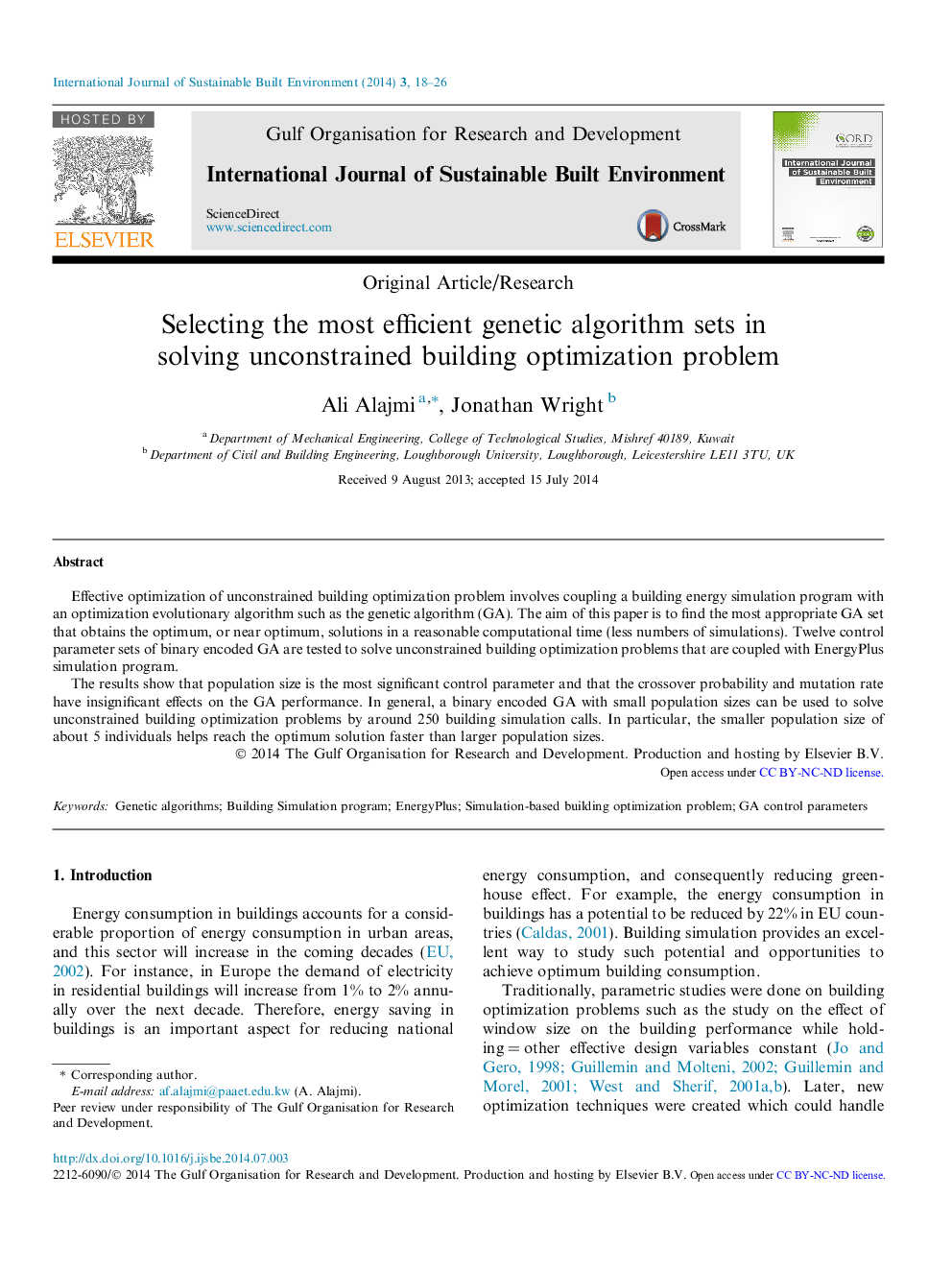| Article ID | Journal | Published Year | Pages | File Type |
|---|---|---|---|---|
| 214785 | International Journal of Sustainable Built Environment | 2014 | 9 Pages |
Effective optimization of unconstrained building optimization problem involves coupling a building energy simulation program with an optimization evolutionary algorithm such as the genetic algorithm (GA). The aim of this paper is to find the most appropriate GA set that obtains the optimum, or near optimum, solutions in a reasonable computational time (less numbers of simulations). Twelve control parameter sets of binary encoded GA are tested to solve unconstrained building optimization problems that are coupled with EnergyPlus simulation program.The results show that population size is the most significant control parameter and that the crossover probability and mutation rate have insignificant effects on the GA performance. In general, a binary encoded GA with small population sizes can be used to solve unconstrained building optimization problems by around 250 building simulation calls. In particular, the smaller population size of about 5 individuals helps reach the optimum solution faster than larger population sizes.
